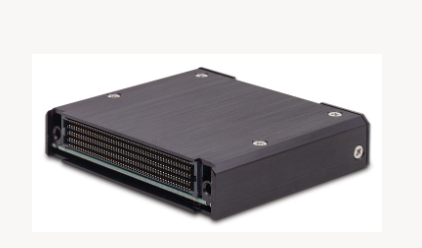The next generation of open systems for small form factor (SFF) embedded computing is starting to make waves in the industry. Enter VNX+, also known as VNX Plus, a scaled-down version of the well-established 3U VPX embedded computing systems. As described by writers at MilitaryAerospace.com, these computer modules are “about the size of a deck of playing cards,”. Therefore, highlighting their compact nature. This new standard aims to revolutionise embedded computing. Simply by reducing size, weight, power consumption (SWaP), system costs, and time to market for SFF embedded computing solutions.
The Goals of VNX+
The primary objective of VNX+ is to address the needs of small but powerful applications. Particularly in the Defence and Aerospace sectors. This includes unmanned vehicles like UAVs and UUVs, 10cm cube satellites, aircraft weapon pods, and other critical Defence technologies. By accommodating these applications, VNX+ aims to be the go-to standard.
The Evolution from VNX to VNX+
The VNX+ standard is a progression from the original VNX (ANSI/VITA 74) SFF embedded computing standard introduced in 2017. The initial version, although ahead of its time, didn’t gain much traction due to the lack of supporting technology. However, the expanded VNX+ standard, developed under the VITA 90.x standards, aims to enhance the performance of VNX technology significantly.
Key Features of VNX+
- Power Dissipation Levels: The new VITA 90 VNX+ proposal includes discussions on three power dissipation levels: 35W (low), 55W (medium), and 95W (high). All depending on the cooling capabilities of the enclosure and other thermal mitigation techniques.
- Advanced Cooling Techniques: Techniques such as oscillating heat pipes (OHP), chassis cooling by conduction. In addition, ram air, fan-forced air, or a liquid-cooled heat exchanger are under consideration to manage thermal challenges effectively.
- Signal Integrity and High-Speed Data: VNX+ is optimized for signal integrity at high speeds. Therefore, accommodates fast data buses and switch fabrics.
- Flexible Standards for Various Applications: Different subcategories. Such as VITA 90.4 for wedgelocks and VITA 90.5 for space applications, cater to specific needs within the standard.
- Component Interoperability: VNX+ uses OpenVPX standards as a basis but is tailored for a small form factor environment. This encourages multiple vendors to supply components, ensuring flexibility in implementation while maintaining component interoperability.
- High-Speed Low-Cost Connectors: The standard adopts signal mappings with new high-speed low-cost connectors (SEARAY). Therefore, facilitating connectivity options like PCI Express, Ethernet, Fibre Optic, and Coaxial for RF and video signals, making the system simple to implement.
- Modular Design: The VNX standard defines a form factor intended for spaces too small for a VPX module. Offering 19mm and 12mm height options. The 19mm module allows for a two-board stack.
- Detailed Specifications: The standard provides details for module base carrier boards. Including connector locations, assembly hole locations, and component keep-out areas. While backplane implementation isn’t specified, details for a 4-slot backplane are provided, along with an example chassis with detailed dimensions.
Understanding VITA 90 and Its Relevance to Embedded Computing
The VITA 90 standard plays a pivotal role in advancing embedded computing systems. Achieved by providing a framework for high-performance and reliable small form factor (SFF) designs. Developed by the VMEbus International Trade Association (VITA), this standard addresses the growing demand for rugged, compact, and scalable computing solutions for applications in Defence, Aerospace, and industrial sectors.
VITA 90 emphasises the following key aspects:
- Enhanced Interoperability
The VITA 90 standard ensures compatibility across a range of embedded computing platforms. By defining common mechanical, thermal, and electrical interfaces. This ultimately promotes interoperability between various modules and systems. This is especially critical in environments where multiple systems from different manufacturers must seamlessly work together. - Compact Design for Space-Constrained Applications
Designed with size, weight, and power (SWaP) considerations in mind, VITA 90 is ideal for applications where space is at a premium. Its compact form factor makes it a natural complement to the VNX (VITA 74) SFF standard, which also focuses on reducing system footprints without compromising performance. - Support for Rugged Environments
VITA 90 is engineered to withstand harsh conditions. Including extreme temperatures, shock, and vibration. This makes it well-suited for mission-critical applications in military and aerospace domains where reliability is non-negotiable. - Alignment with VNX Standards
While VNX (VITA 74) sets the benchmark for small form factor systems, VITA 90 extends its applicability by addressing specific performance and integration needs. Together, these standards enable embedded computing systems to achieve new levels of efficiency and functionality.
Conclusion VNX+ SFF Standard for Embedded Computing
The VNX+ standard represents a significant leap forward in embedded computing technology, particularly for Defence and aerospace applications. By addressing size, weight, power consumption, and system cost challenges, VNX+ aims to provide a robust, flexible, and interoperable solution for small form factor computing needs. As technology continues to advance, the adoption of VNX+ could pave the way for more efficient and powerful embedded computing systems in a variety of high-demand applications.
This is advanced information and subject to change.
To learn more about some of our supplier’s products who are embracing and developing this technology, reach out and contact us.
Or to get a sneak peek at what WOLF Advanced Technology are creating, check out here.
